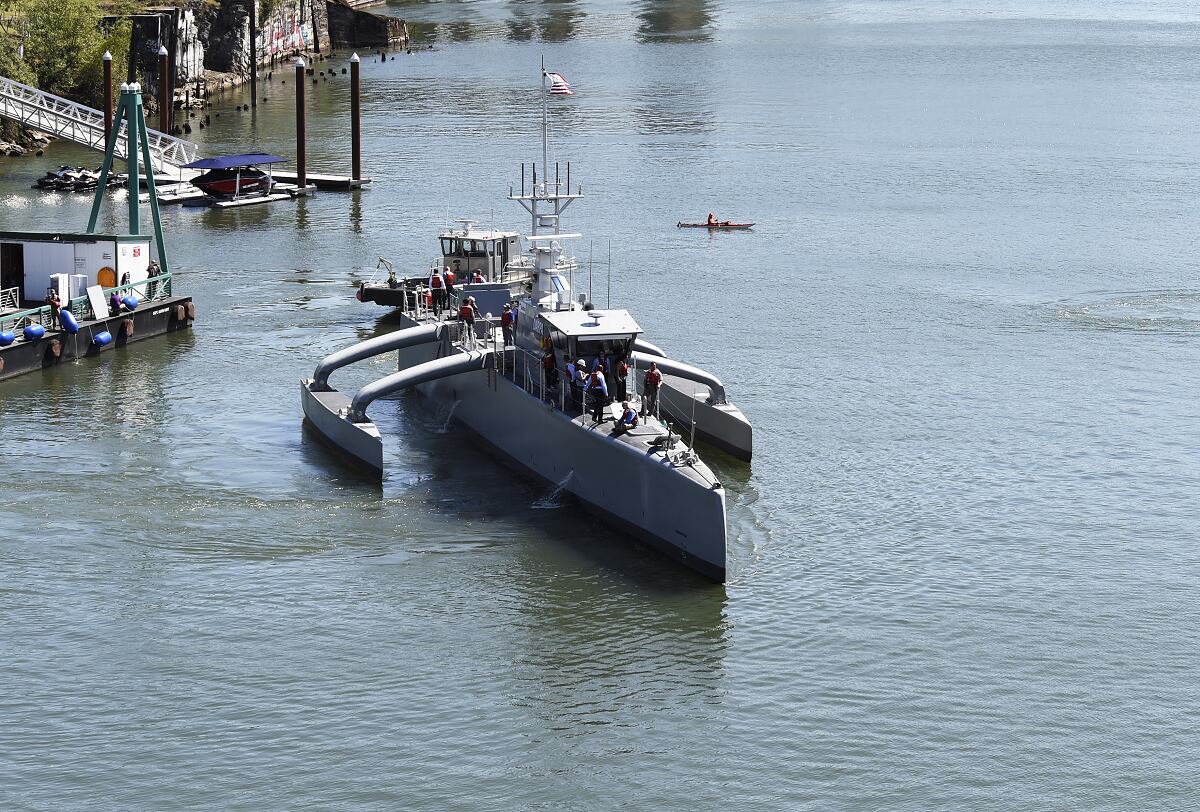
WASHINGTON — Off the Atlantic coast of Portugal’s Sesimbra and Troia peninsulas, NATO is hosting a gathering of its robot ships and aircraft that the partner nations hope will soon pepper the ocean with sensors for hunting submarines, mines and ships, fused together in a surveillance network unrivaled in maritime history.
Several nations along with the NATO Centre for Maritime Research and Experimentation have gathered “dozens of unmanned underwater, surface and air vehicles” for Exercise REP (MUS) 19, held Sept. 11-19, according to a NATO news release.
About 800 service members and civilians from the Portuguese Navy, as well as Belgium, Italy, Turkey, Poland, the United Kingdom and the United States, are participating in the exercise.
The exercise follows up on a July 2018 agreement between the allies to work together to develop unmanned maritime systems, a goal that experts say is primarily aimed at increasing pressure on Russian submarines operating in the region.
“NATO members are alarmed by the growing threat from Russian submarines, and are investing more resources to deal with it,” Jorge Benitez, a senior fellow at the Atlantic Council, said during an interview. “Under [President Vladimir] Putin, Russia has deployed new, stealthier submarines in the north Atlantic that are much harder for NATO navies to track."
Benitez previously served as the lead on NATO issues for the Office of the Secretary of Defense.

“This new multinational cooperation in undersea drones is the most recent example that NATO is taking the Russian threat in the north Atlantic much more seriously than it has in the past quarter century,” he added.
A release announcing the exercise acknowledged as much, saying that submarines armed with more powerful weapons, such as Russia’s Kalibr cruise missile, pose a significant threat.
“New maritime unmanned systems technologies can be a game-changer in countering multiple threats in the maritime domain,” the release said. “Using Maritime Unmanned Vehicles can help effectively counter new submarines armed with more powerful weapons. They can also prevent military personnel from moving into risky situations in countering threats like sea mines.”
RELATED

The U.S. military believes that since surface combatants and submarines armed with expensive sonar arrays are too few and far between to monitor all the world’s chokepoints, it is developing cheaper systems it can deploy to increase numbers and cast a wider net.
That’s the idea behind Sea Hunter. Developed by the U.S. Defense Advanced Research Projects Agency, the Anti-Submarine Warfare Continuous Trail Unmanned Vessel, or ACTUV, was designed to track enemy subs while avoiding collisions and abiding by the rules of the road. The first Sea Hunter was christened in 2016, and in January the project transitioned to the Office of Naval Research for further development.
“ACTUV represents a new vision of naval surface warfare that trades small numbers of very capable, high-value assets for large numbers of commoditized, simpler platforms that are more capable in the aggregate,” Fred Kennedy, head of DARPA’s Tactical Technology Office, said in a January news release.
“The U.S. military has talked about the strategic importance of replacing ‘king’ and ‘queen’ pieces on the maritime chessboard with lots of ‘pawns,’ and ACTUV is a first step toward doing exactly that.”
David B. Larter was the naval warfare reporter for Defense News.






